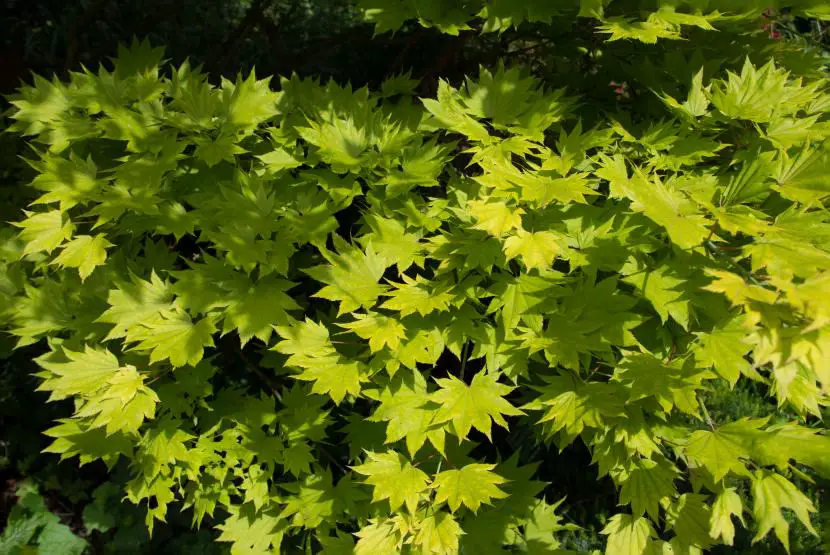
We all know the japanese maple, a beautiful tree with palmate leaves which dress up in autumn. But, did you know that there is another oriental species just as decorative? It is somewhat more difficult to find, and also somewhat more demanding. However, worth growing in temperate to cold climates.
Your name? Scientifically it is known for Acer shirasawanumbut in English it has one that you might like more: fullmoon maplewhich could be translated as the maple of the full moon.
Features

This is a small tree that can be pruned to keep it as a shrub. Originally from Japan, at the moment, there are only two accepted varieties: the Acer shirasawanum subsp. shirasawanum and Acer shirasawanum subsp. tenuifolium. Cultivating Acer shirasawanu »Golden» (which you can see in the images in this article) is the one that has begun to be cultivated the most in Europe. It grows to a height of about 4-5m, with a crown diameter of 1 or 2m depending on the pruning done. Its leaves are webbed, light green in spring and summer, and red or pink in fall.
It has a slower growth rate than the rest of the maples that come from the Japanese country, since it does not usually grow more than 10cm / year (the Acer palmatum, if the conditions are appropriate, can grow an average of 50cm / year so that I have been able to verify this same season). It is thus a ideal plant to have in a pot throughout his life decorating, for example, the patio.
Care

As we said, we are facing a more demanding plant than others of its kind. But it is also true that a good substrate will increase its resistance considerably. Still, although there may be very pleasant surprises, it is best to provide you with what you need right from the startWhat is it:
- Weather: from warm to cold. An ideal temperature range would be between -5ºC minimum and 30ºC maximum.
- Substratum: if the climate we have is right, it can be grown in a special substrate for acidophilic plants; Otherwise, it is preferable to mix 70% akadama with 30% kyriuzuna so that the roots are always aerated and can thus better absorb the water that will keep the leaves in perfect condition.
- Irrigation: in general, we will water -always with rain water, or acidified by adding a few drops of lemon- about 3 times a week in summer and 1-2 the rest of the year.
- Location: semi-shade, avoiding direct sun.
- Fertilizer: to achieve good growth and development, we will fertilize using a liquid fertilizer for acid plants from spring to late summer.
- Pruning: if we want to prune it, we will either do it in autumn, or when the risk of frost has passed, trimming the branches that have grown too long to keep it compact, »rounded».
The Acer shirasawanum It is a spectacular plant to have both in gardens that have acidic soils, and in pots. Did you know him?
